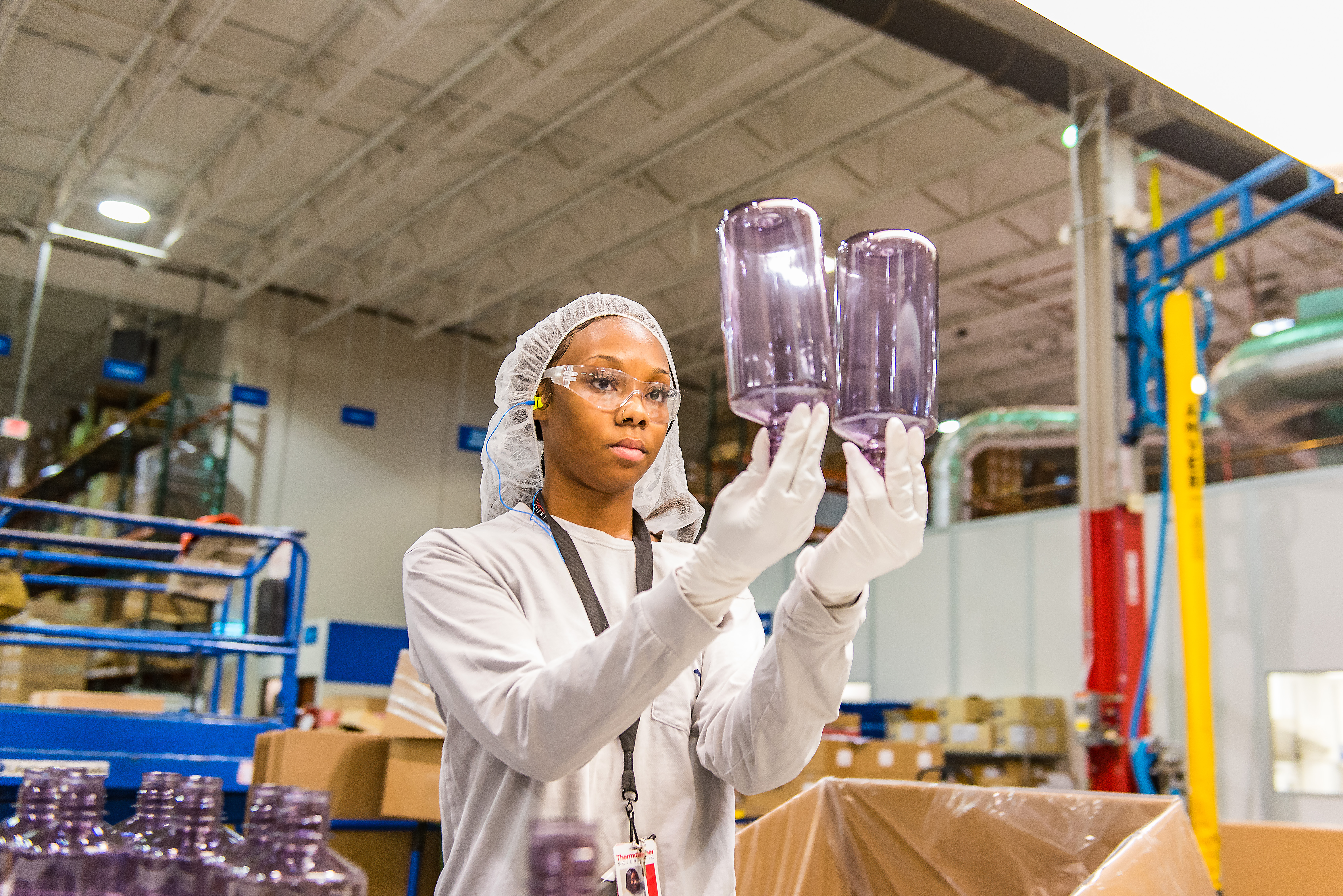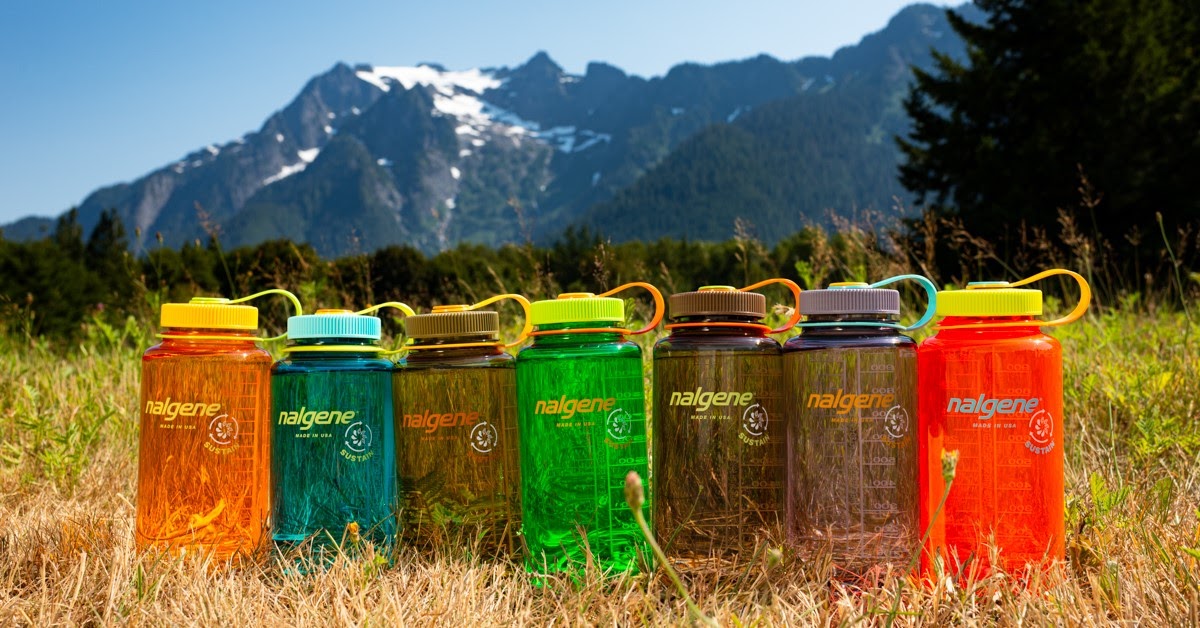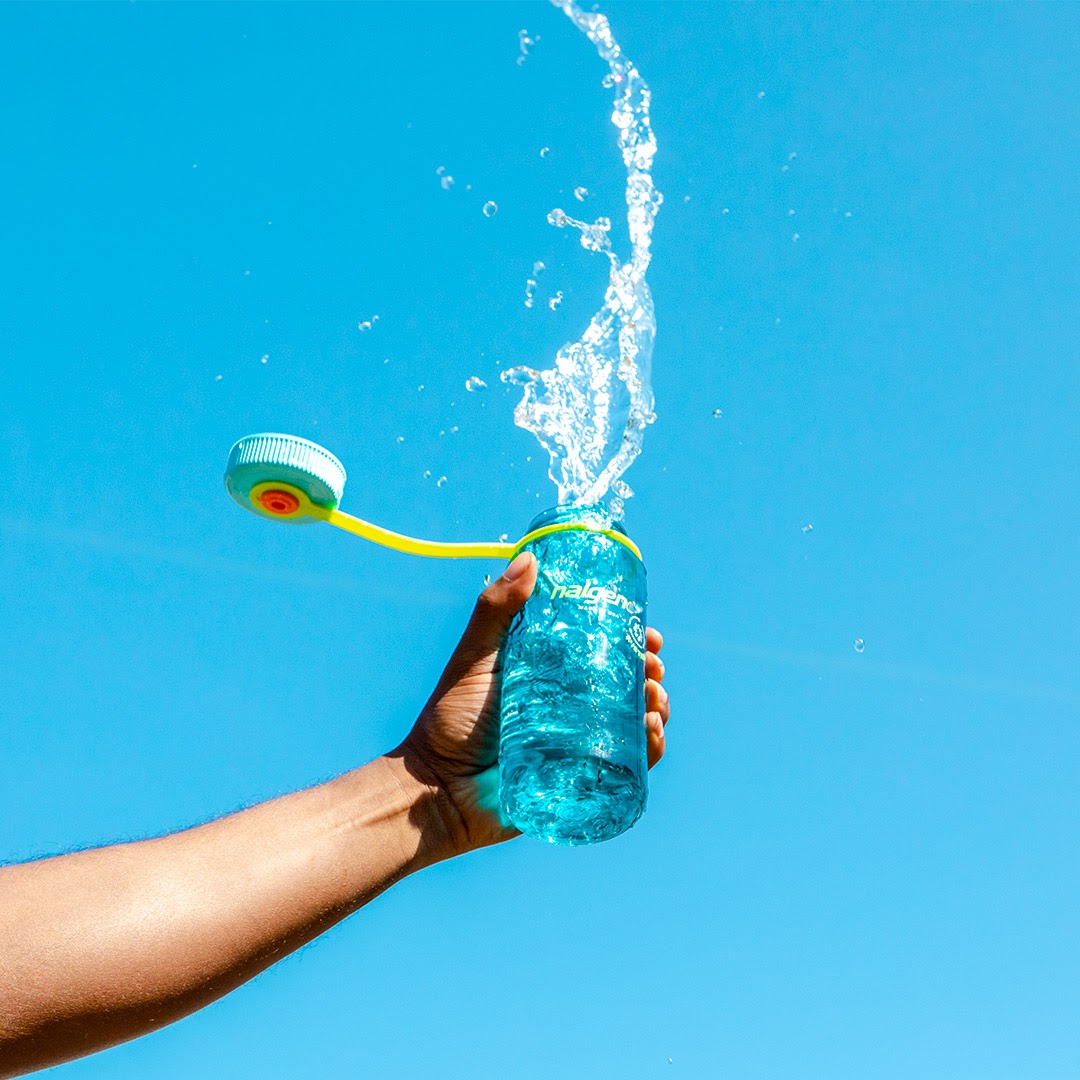Whether you’re a hardcore adventurer trekking across the Himalayas or a city-dwelling skater gulping water between grinding handrails, you’ve probably owned a Nalgene bottle. From its first appearance in the cultural zeitgeist — a statement piece for the backpackers and environmentalists of the ’70s — the brand has cultivated intergenerational appeal through a commitment to simplicity, durability, and sustainability. It’s got that special classic/ timeless quality that so few products ever achieve. So much so that the phrase “let me fill up my Nalgene” is ubiquitous everywhere from destination music festivals to boutique hostels to backcountry hiking routes.
Now, with the launch of Nalgene Sustain bottles the brand is ready to build on its rich legacy by doubling down on the qualities that made its signature product so iconic. This new iteration, like those preceding it, lives at the intersection of form and function. It balances utility and stylishness while pushing deeper into the frontier of a market it single-handedly defined.
“We essentially created the personal hydration category,” Elissa McGee, GM of Nalgene Outdoor Products says. “That concept wasn’t a thing, so we defined it. Now we’re taking it further.”
McGee explains that in creating the Nalgene Sustain line, the brand is once again eager to set the bar, this time as the first reusable bottle made with recycled plastic to hit the market. Using a revolutionary material, Tritan Renew, every Nalgene Sustain bottle is composed of up to 50% recycled plastics otherwise destined for a landfill.

Part of the Nalgene brand’s push for a more sustainable product is a reassertion of the brand’s core beliefs. It’s also a necessary response to the plague of single-use and short-term-use plastics that adventurers and vagabonds see strewn along trails and beaches year after year. But while the commitment to build a recycled bottle was longstanding, Nalgene Sustain bottles represent new production processes that weren’t previously possible.
“If you tested one of our new Nalgene Sustain bottles and you tested the standard Nalgene bottle, you wouldn’t be able to tell the difference,” McGee says. “It’s exactly the same performance but we’ve made it that much cleaner and that much more sustainable — all while still being the bottle you know and love.”
Aside from being half-composed from recycled material, the Nalgene Sustain line doesn’t make any moves to change the classic Nalgene silhouette. In our opinion, it’s better for it. It’s still a short, stocky, lightweight 32-ounce bottle with a recognizable wide-mouth design dressed in seven translucent colorways. Every visual cue — from the logo to the measurement lines — points back to the brand’s history.
“There’s not a decision that we make that doesn’t tie back to who we are or doesn’t connect to where we came from,” says McGee.

Nalgene first began as part of the Nalge Company in Rochester New York in 1949 as a plastic alternative to glass laboratory beakers. Everything from the iconic wide-mouth design to the simple shape and measurement scale printed on the side of each bottle has its origins in the lab market. In fact, it’s this practicality that first inspired scientists to start taking the bottles out on the trails with them instead of lugging around clunky metal canteens.
After catching on with the backpackers and renegade environmentalists of the 1970s, Nalgene bottles hit the mainstream at the 1980 Olympics at the side of the US hockey team. In the decades since, it’s clearly established itself as the standard when it comes to reusable water bottles for skaters, hikers, wanderers, and lifestyle artists.
“We have this funky crazy looking little bottle,” McGee notes. “But it’s because it has been fully pressure-tested in the labs to make sure it does all of the things you need it to do — that’s what made it really take off.”
Ironically, the Nalgene brand’s “function over fashion” attitude and the bottle’s penchant for customization via stickers and printed logos has created huge fans for the brand in the streetwear community. Fashion houses like Supreme and UNDEFEATED have done splashy collabs that quickly sold out. By the same token, smaller customizations and tweaks — like the different-colored bottle caps, logos, and cap attachment pieces across the Sustain line — are quickly noticed and celebrated by style-centric aficionados.
“When you start to look at those streetwear partners or those girls and guys who are especially trend-forward and really pushing the envelope, what they look for is something that doesn’t want to or need to ride their coattails,” McGee notes. “They want to find a brand that is authentically doing its thing that they can put their unique spin on.”
Of course, authenticity isn’t something achieved through buzzwords and “brand story.” It’s hard-earned — field-tested across decades. It comes with scrapes, scratches, and lots of miles. As McGee says:
“We’ve heard so many stories — from service members in the military who have told us that a piece of shrapnel that would’ve otherwise hit them hit their bottle, to people telling us that purchasing our bottle was their first step toward a healthier lifestyle, to nature hacks using a Nalgene bottle as a nightlight or pouring hot water in it to use as a heater in a sleeping bag — stories like that are something we really treasure.”
The new Nalgene Sustain line builds on the legacy that both McGee and fans of the bottle are so eager to highlight. The new line updates what is arguably the most recognizable reusable water bottle in the history of reusable water bottles with a true-to-form performance and technology-based step forward into the future. “Be yourself, but keep your eyes on the horizon,” it announces.
That balance of growth and commitment to history is a delicate tightrope to walk. This bottle handles it with style.


